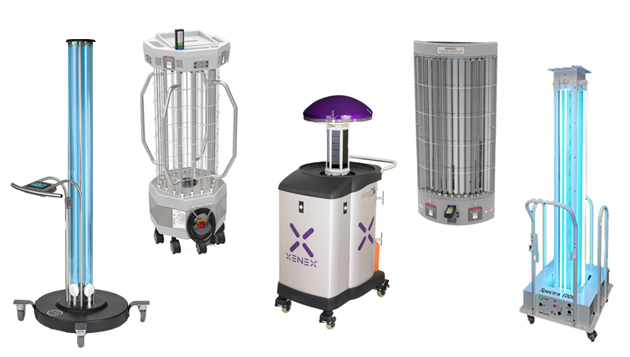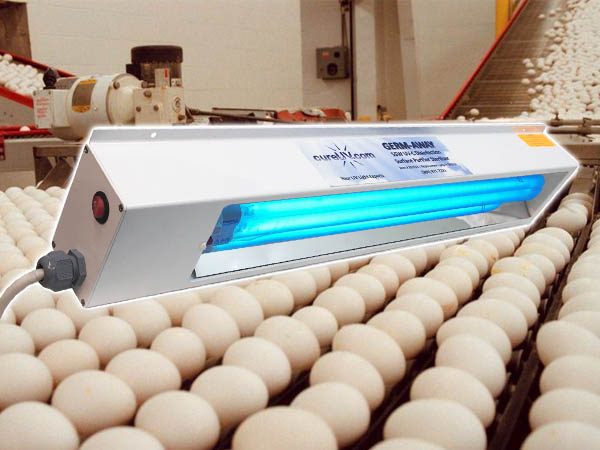Revealing the Benefits of UV Disinfection: Ensuring Tidy and Disinfected Rooms
While typical cleansing methods have actually long been depended upon, innovations in modern technology have introduced a cutting-edge service that ensures tidy and disinfected spaces: UV sanitation. Furthermore, we will certainly dive into the safety factors to consider that should be taken right into account when executing UV disinfection. Prepare to reveal a new dimension of tidiness and uncover the untapped capacity of UV sanitation.

The Science Behind UV Disinfection
UV sanitation is a scientifically tried and tested approach that uses ultraviolet light to eliminate unsafe microorganisms from surfaces and water. The scientific research behind UV disinfection hinges on the ability of UV-C light to harm the DNA and RNA of microorganisms, providing them unable to reproduce and triggering their ultimate fatality. UV-C light falls within the wavelength range of 200 to 280 nanometers, which is extremely effective in ruining microorganisms, infections, and other virus.
When exposed to UV-C light, the hereditary product of bacteria absorbs the power from the light, leading to the formation of thymine dimers. These dimers interfere with the normal duplication and transcription processes of the microbes, inhibiting their capability to make it through and reproduce (uv surface disinfection). The DNA and RNA damage triggered by UV-C light is lethal to the bacteria, making UV sanitation a dependable and efficient approach for eliminating a wide array of pathogens
UV disinfection is specifically beneficial in environments where typical chemical disinfectants may be unwise or inadequate. It is a non-chemical technique that does not leave any kind of deposits or harmful by-products, making it safe for use in food handling, medical care centers, water therapy plants, and numerous other markets. UV sanitation is ecologically pleasant, as it does not contribute to the advancement of antibiotic-resistant germs or various other dangerous contaminants.
Efficiency of UV Disinfection on Pathogens
The efficiency of UV disinfection in getting rid of pathogens has actually been thoroughly examined and confirmed in countless scientific research studies. UV radiation has the ability to inactivate a variety of microorganisms, including infections, bacteria, and fungis, by damaging their DNA or RNA. This stops them from duplicating and creating infections.
One research study released in the American Journal of Infection Control discovered that UV disinfection was reliable in decreasing the visibility of several drug-resistant bacteria in medical facility areas. Another research carried out by the National Institute for Occupational Safety and security and Health and wellness showed that UV disinfection had the ability to eliminate 99.9% of the flu virus on surfaces.
UV sanitation has additionally shown pledge in combating the spread of healthcare-associated infections (HAIs) According to a study released in The Lancet, using UV-C light in enhancement to conventional cleaning methods substantially reduced the incidence of HAIs in a medical facility setup.
Moreover, UV sanitation has verified to be effective versus arising pathogens, such as the extreme intense respiratory system syndrome coronavirus 2 (SARS-CoV-2), which creates COVID-19. A research conducted by the National Arising Contagious Diseases Laboratories showed that UV-C light can inactivate the infection on surface areas within seconds.
Applications of UV Sanitation in Various Setups
With its tested performance in removing pathogens, UV disinfection has found applications in a variety of settings. One of one of the most typical locations where UV disinfection is made use of is in health care centers. UV modern technology is used to disinfect client areas, operating rooms, and various other high-touch surface areas, reducing the risk of healthcare-associated infections. Furthermore, UV sanitation is additionally being applied in food handling plants and dining establishments to make certain the safety and security of food and stop the spread of foodborne ailments. UV sanitation is additionally beneficial in water therapy plants, where it is utilized to eliminate dangerous bacteria and offer safe alcohol consumption water.
An additional essential application of UV disinfection impends purification industry. UV air cleansers are utilized in domestic, commercial, and commercial settings to remove airborne microorganisms, viruses, and mold spores. This modern technology is especially useful in settings where individuals are much resource more vulnerable to respiratory infections, such as healthcare facilities, institutions, and office structures.
In addition, UV sanitation is progressively being made use of in public transport systems, such as buses and trains, to keep clean and sanitized areas for guests. UV light is employed to decontaminate surface areas and air inside the cars, reducing the threat of spreading transmittable illness.
Advantages of UV Sanitation Over Traditional Approaches
In comparison to traditional approaches, UV disinfection supplies a range of distinctive benefits that make it a preferable selection in various industries and settings. One substantial advantage is its effectiveness against a wide array of microorganisms, including viruses, fungis, and microorganisms. Unlike chemical anti-bacterials that might have restricted effectiveness versus specific microorganisms, UV disinfection is a non-selective process that can kill or suspend a wide spectrum of harmful organisms.
Another benefit of UV disinfection is its ability to provide rapid and efficient sanitation. Typical sanitation methods typically need longer get in touch with times or multiple steps to attain the preferred degree of disinfection. On the other hand, UV light can offer immediate and continual sanitation, lowering downtime and boosting efficiency in various applications.
UV sanitation additionally supplies a environmentally pleasant and risk-free alternative to typical sanitation methods. uv surface disinfection. Unlike chemical representatives, UV light does not leave behind any kind of damaging residues or by-products, making it suitable for usage in delicate atmospheres such as food processing centers, health care setups, and water therapy plants
Moreover, UV disinfection is a cost-efficient option over time. While the ahead of time financial investment for UV sanitation systems may be higher than traditional techniques, the functional costs are normally lower. UV lights have a long life expectancy and need marginal maintenance, resulting in decreased labor and substitute expenses.
Safety Considerations for UV Sanitation
Taking into consideration the potential risks connected with UV sanitation, it is essential to address the security considerations included in executing this technology. UV sanitation makes use of ultraviolet light to eliminate or suspend microorganisms, making it an effective method for sterilizing various surface areas and things. However, it is essential to understand that UV radiation can also pose risks to human health if correct precaution are not adhered to.
First and foremost, straight exposure to UV radiation can trigger damage to the skin and eyes. Prolonged direct exposure can cause sunburn, skin damage, and even an increased threat of creating skin cancer. For that reason, it is essential to ensure that UV sanitation systems are correctly enclosed and outfitted with security features such as automated shut-off mechanisms or motion sensors to avoid accidental direct exposure.

In addition, correct training and education are vital for those in charge of operating UV sanitation systems. They must recognize the potential threats, recognize the security protocols, and know just how to manage and maintain the tools appropriately.
Final Thought
In conclusion, UV sanitation uses numerous advantages in making sure clean and sterilized spaces. Its effectiveness in removing microorganisms has actually been confirmed with clinical research. UV sanitation can be applied in numerous settings, consisting of health care facilities, food handling plants, and water treatment systems. Contrasted to conventional approaches, UV disinfection has benefits such as faster disinfection times, marginal chemical usage, and no unsafe by-products. Safety discover this info here factors to consider should be taken into consideration to stop potential threats related to UV direct exposure.
UV disinfection is a medically tried and tested technique that makes use of ultraviolet light to get rid of unsafe microbes from surfaces and water. The DNA and RNA damage triggered by UV-C light is dangerous to the microbes, making UV sanitation a trusted and reliable approach for eliminating a wide range of pathogens.
Another advantage of UV disinfection is its ability to provide rapid and reliable sanitation. UV sanitation uses ultraviolet light to eliminate or suspend bacteria, making it an efficient technique for sterilizing various surfaces and things. Contrasted to typical approaches, UV sanitation has advantages such as faster disinfection times, minimal chemical use, and no unsafe results.